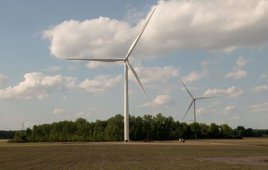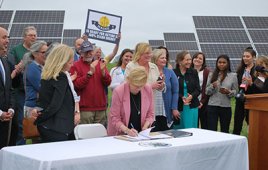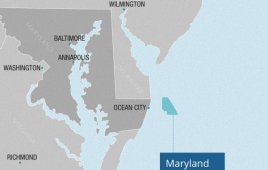We’ve all read the news that the United States has, after four years of remarkable growth, relinquished its’ position as the most attractive country for renewable energy investments. But rather than state the news, I want to discuss why we are slowly slipping behind our foreign competitors.
One key factor in the U.S. decline is the failure of congress to provide any form of certainty to the market. You’ve no doubt heard that the pleas for a national Renewable Energy Standard (RES) have fallen on deaf ears as senators and representatives shy away from legislation that may negatively impact their re-election chances in November. Several pieces of pro-renewable energy legislation have been proposed and brought before Congress, but in the spirit of partisan behavior our beloved congress has failed to produce any results. As such, the tax credits and cash grants that have led to a booming renewable energy economy over the last four years are coming to an end, and no legislation is in place to support the industry afterward. On top of this (and a bit of a side note) the “Bush Tax Cuts” are coming to an end as 2010 concludes. Although this is not directly related to renewable energy, increasing tax rates also increases the level of investment uncertainty in our country.
So why is Congress having such a hard time passing a bill that will both improve our economic future and decrease our dependence on foreign energy? In a word: Money. It all boils down to money, cold hard cash. Businesses and their lobbyists are working away on Capitol Hill, whispering in the ears of our representatives, planting the idea that if the federal government supports renewable energy development than energy prices will jump to a level that is too high for businesses to maintain their global competitive advantage. Unfortunately this is just not the case. In fact, the U.S. has by far the lowest energy costs in the world. Our national average (commercial) price is under $0.05/kWh whereas our nearest competitor, China, spends roughly $0.11/kWh. Though, even if we were to put that point out of the way, there is still enough evidence to refute these anti-renewable energy lobbyists in just one point. The implementation of a national 15% Renewable Energy Standard will only increase our energy costs by a fraction of one cent per kilowatt-hour.
Furthermore, this discussion of costs is only looking at the short-term cost increases and brings into account the possible decommissioning of old and heavily polluting coal-fired plants. However, if we were to look at the long-term outcome we would find that the costs level out, or hit an equilibrium point, after somewhere in the neighborhood of 30 years. As we look further into the future, say 50 or 60 years, renewable energy and the hedge that it provides will likely prove beneficial on a national cost perspective.
Now, to wrap up my thoughts, I’d like to address the issue of infrastructure and innovation right here in the U.S. of A. Though we as a nation have among both the highest wind and solar potential in the world, we are severely behind in manufacturing infrastructure and innovation advances. Often we make the mistake of assuming that the U.S. is the world’s thought-leader, and that we inherently have (almost) the right to innovate while other countries will manufacture and produce. Though this may have been the way of the past, countries like China, India, and South Korea are stepping up to the plate while simultaneously we as a country are withering away, unsure of our future, and afraid (at least Congress is) to take a stance and become the leader in renewable energy.
Filed Under: Uncategorized





The wind energy business, especially small wind, was gaining momentum at the beginning of 2009 as companies like ours discovered many prospective business clients were interested in purchasing 6kW – 10kW wind turbines economically supported by state and federal incentives, even if just to market themselves as ecologically “green” in anticipation of a big shift in popular culture. I believe that the supportive political party in power at the time gave our customers confidence that the incentives would survive the lengthy ROI of a wind energy solution.
I think the political uncertainty that affected investment in renewable energy solutions, products and infrastructure development in the U.S. became noticeable and adversely affective for our business around the fall of 2009. It was then that conservative political voices seemed to create an environment of trepidation, especially here in Michigan. Once eager prospects became tentative as populist conservatives used the media to help cast doubt on the future of legislation like the American Recovery and Reinvestment Act of 2009, an instrument which helped reduce investment risk in alternative energy products and encourage business growth. Thus, I agree with the general consensus here in this forum that the voices of long-term, forward thinking citizens should be elevated above the political noise that stifles or frightens our pioneers of a sustainable, renewable energy future in this country.
You know the old aphorism, “United We Stand, Divided We Fall”? It has never been more true. There are many, many divisions we must face as a nation, a society and as individuals that directly impact attempts to secure for ourselves a brighter future.
Never in recent times have the divisions been so pronounced.
A deeply divided congress… a politically divided society… a sharp division between the ‘haves’ and ‘have-nots’… until we face the root causes of these divisions, efforts to move forward will truly be against the wind.
I believe the experiment that is the young America is in jeopardy of failing if we don’t stand up and unite as Americans first, partisans or consumers second.
I for one am voting for representatives who vote for bills that encourage a brighter future. Let’s fire the ones who just want to fight.
Unfortunately, the wind and solar industries are young in this country and are not able to equal the financial and political power of the lobbyist coal and oil industries. Since this is the case, what the young industries should continue to do is to push its agenda in the market forces—the consumers. Policy talk comes with politics, and that stops everything. When consumers are able to understand how innovation works for their pockets and lives, everything moves forward.
I think that we are falling behind due to the big money politics and clout of the fossil fuel lobby. The only way that I see around this road block is to take the fight to the streets!
Only by engaging the public on a large and consistent basis can we hope to sway the people to demand that our politicians do the right thing. In essence, the only thing that will trump the oil company’s money and clout is a ground swell of public support for the implementation of renewables.
Bob “Free As The Wind” Mitchell
Mainly because nobody wants to put up any money right now… Secondly because offshore wind is now 10 years behind Europe… We need a change in attitude.
Wait until after the elections, without “certainty” investments will be minimal. That’s what our company is waiting on.
well, issues with US demographics and wind power economics and costs related to transmission compels the development of new projects at offshore sites. This brings completely new scenario where the industry has very limited exposure and costs are high. Any new developments on this ?
Regarding being the thought leaders, our doors used to be much more open to bright talent from anywhere in the world. Protectionist immigration policy pushed by labor, and a new wave of xenophobia, have really hampered the ability of domestic companies to hire great talent. China, India, Europe, and Canada are happy to retain or import the talent we reject through our misguided immigration policy.